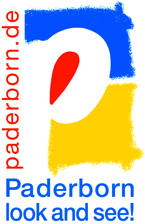Short Walk through Paderborn
Paderborn is rich of places of interest. The city centre alone features over twenty historical buildings. Among the many interesting landmarks are, for instance, the city hall, the reconstructed Imperial Palace, the Cathedral and the Pader Springs. This guided tour will lead you to the most important sights.
Walking through Paderborn is like walking through the centuries. The cityscape unmistakably mirrors the city’s eventful history of more than 1,200 years. The centre alone contains more than twenty historical buildings of all architectural epochs. The reconstructed Ottonian-Salic imperial palace (Kaiserpfalz) to the north of the cathedral was built in the Romanesque period. In front of it, the foundation walls of Charlemagne’s palace can be seen. The Bartholomäuskapelle with its extraordinary acoustics was built in 1017 and is considered to be Germany’s oldest hall church.
The influence of the Romanic era can clearly be seen on three churches: the octagonal tower of the Gaukirche, the Abdinghofkirche with its striking twin towers, and the Busdorfkirche with its remarkable cloister from around 1300. The transition from Romanesque to Gothic era is most evident in the cathedral (Dom). Its massive Romanesque tower of 92 m stands in clear contrast to the nave with its Gothic windows and tracery arches. The crypt is the repository of the remains of Saint Liborius, the patron of the city and archbishop-ric. The cloister contains the famous Three-Hares-Window (Drei-Hasen-Fenster), one of the most prominent landmarks of Paderborn.
The three-gabled Paderborn town hall, the Heisingsche Haus as well as the Adam-and-Eve-House, the town’s oldest half-timbered house, are perfect examples of Weser Renaissance architecture. The Theological Faculty, the grammar school Gymnasium Theodorianum as well as the former brewery near the Pader springs are further examples of this architectural style. In the city, there are also various examples of Baroque architecture. Among the most significant buildings are the former Jesuitenkirche with its reconstructed high altar, the Franziskanerkirche in the pedestrian area, the Michaelskirche, the Archbishop’s Palace (Erzbischöfliches Palais), the Libori Chapel on Liboriberg, the Kapuzinerkirche as well as the former Domdechanei, today’s municipal library.
The recent past has also shaped the cityscape significantly. The Libori-Galerie next to the Archbishop’s Palace, the Rathauspassage between Rathausplatz and Rosenstraße as well as a few other buildings in the pedestrian area are successful examples of architectural enhancements from the past two decades. In 2011, the group of buildings surrounding Neuer Platz with its Volksbank passage and the new Theatre was finished and constitutes a special example of the architectural modernisation.
Thus, Paderborn’s city centre now presents itself as a colourful mixture of traditional locations, historical buildings and modern architecture. In Schloß Neuhaus, about 4 km from the city centre, there is the former residence of the Paderborn prince bishops. The water castle from the early Weser Renaissance era with its lovely Baroque garden are well worth visiting.
